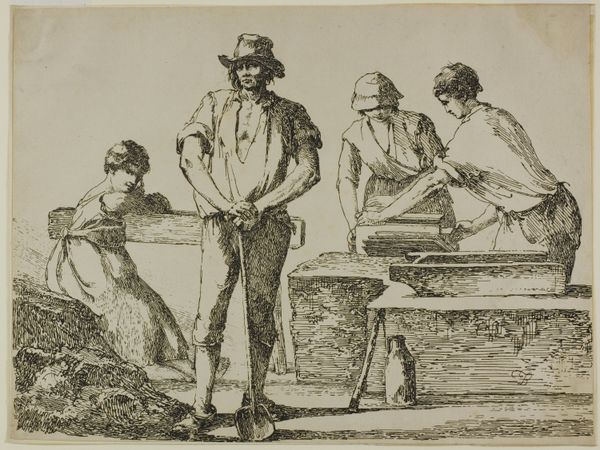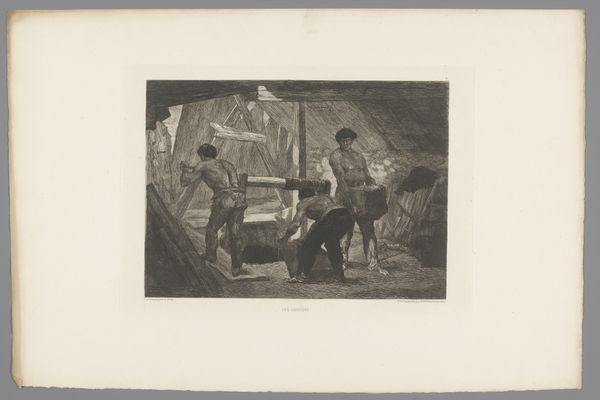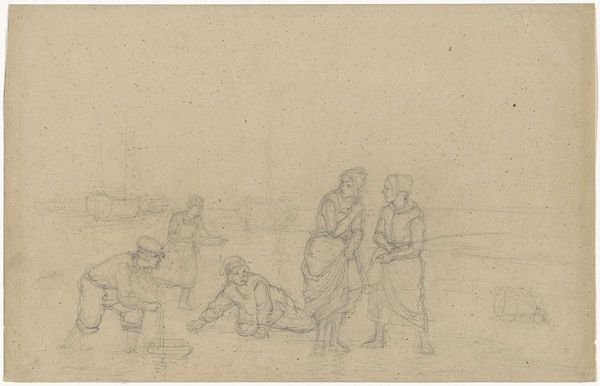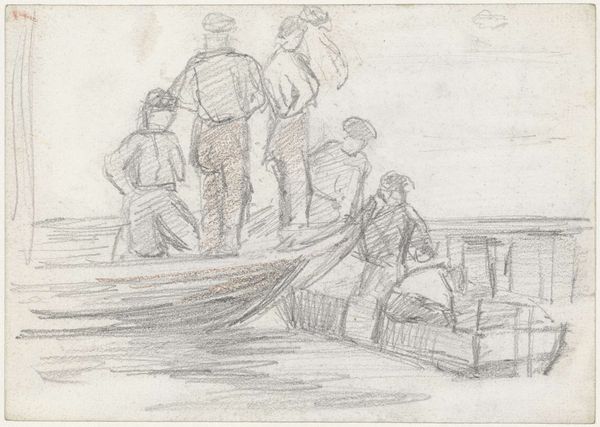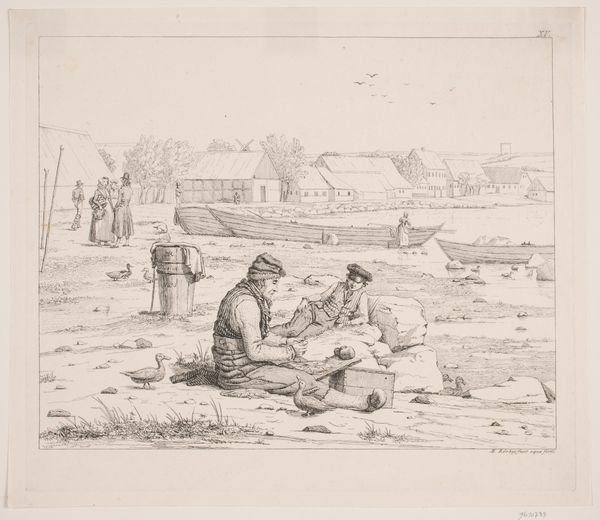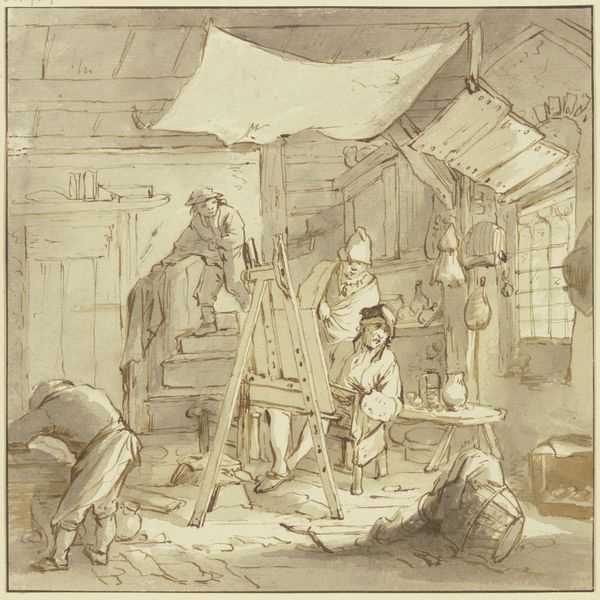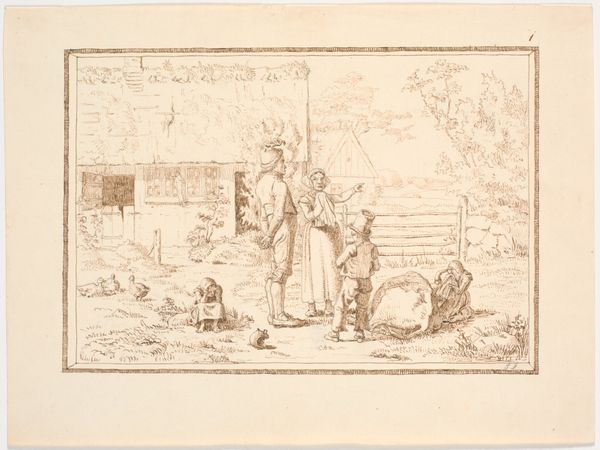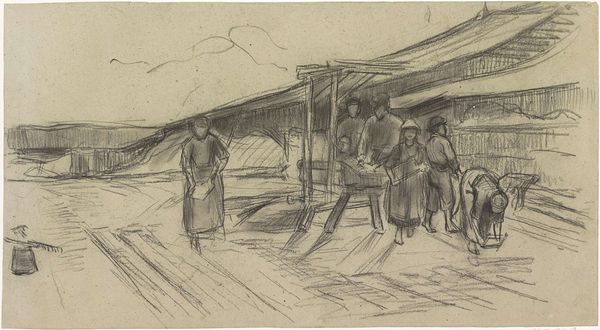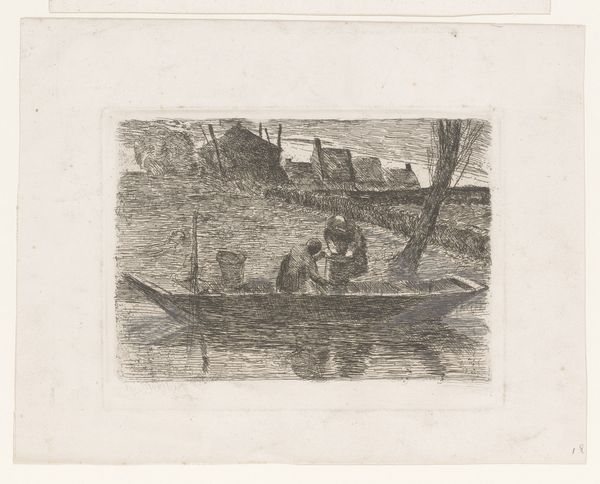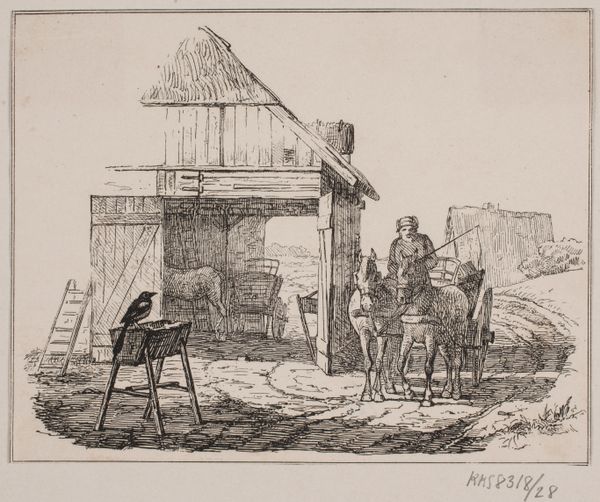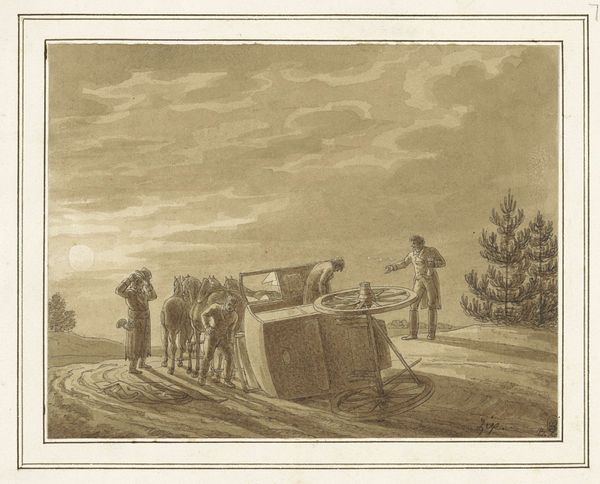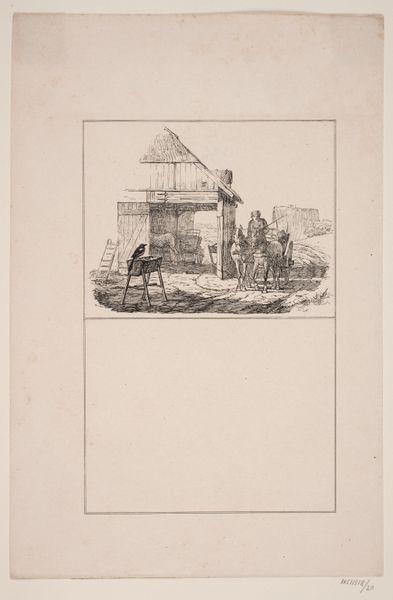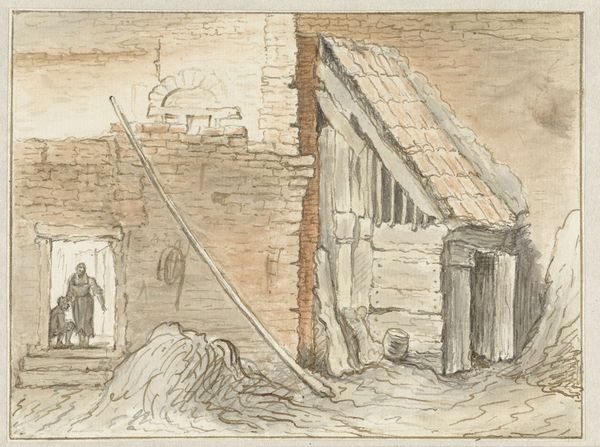
drawing, pencil
#
drawing
#
light pencil work
#
quirky sketch
#
pen sketch
#
landscape
#
personal sketchbook
#
idea generation sketch
#
ink drawing experimentation
#
pen-ink sketch
#
pencil
#
sketchbook drawing
#
genre-painting
#
storyboard and sketchbook work
#
sketchbook art
#
realism
Dimensions: height 322 mm, width 587 mm
Copyright: Rijks Museum: Open Domain
Curator: This is Anthon Gerhard Alexander van Rappard’s "De steenfabriek," or "The Brick Factory," which he worked on from 1868 to 1892. It’s a detailed drawing rendered in pencil. Editor: There’s something incredibly bleak about the entire composition. The muted tones and almost imperceptible details create a mood of heavy resignation. It almost feels as if even the sky is weighted down. Curator: Rappard's compositional choices certainly underscore that sentiment. Note the lines; they build depth not only by recession, but also vertically—the industrial chimneys and building height give the work an oppressive, almost suffocating quality. Editor: Indeed. And I find myself particularly drawn to the workers themselves. They’re depicted with a sense of anonymity. Their bent postures and shadowed faces suggest lives consumed by relentless labor. Brick factories and brick making symbolize strength, permanence, building of modern life; but we only see a very different side of such process. Curator: From a formalist point of view, the repeated use of angular forms mimicking the shape of bricks or roof-tops across different spatial planes creates a visual echo that strengthens the compositional unity and underscores a theme of manufactured landscapes. Editor: I see more. It seems to subtly criticize the social implications of industrialization. Factories were both a sign of progress and a source of dehumanization for many laborers at the time. It is about this specific time, and also about working conditions overall. Curator: Precisely. I appreciate your reading. I also see his skillful manipulation of light and shadow as critical for modulating this piece, which avoids descending to full naturalism and expressing the conceptual dimension. Editor: Yes, the symbolic potential in even a simple pencil sketch about manual labor shows how visual culture is often communicating the complex truths about reality that may be invisible. Curator: Reflecting on "The Brick Factory," it seems as potent now as it was then in its silent visual form. Editor: Agreed. The quiet restraint amplifies its historical context and speaks volumes about the experience of those workers caught in industrial modernity.
Comments
No comments
Be the first to comment and join the conversation on the ultimate creative platform.
